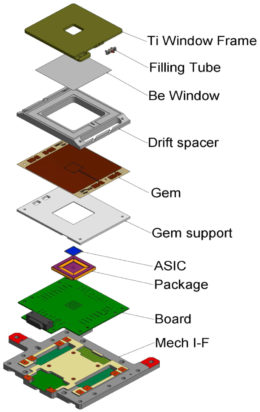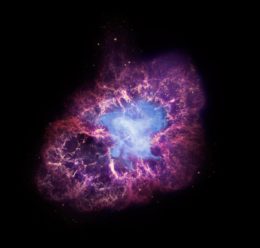It’s always exciting when a new spacecraft launches. What can we expect from the new X-ray mission from NASA and the Italian Space Agency that leapt into orbit around Earth last week?
A Brief History of X-Ray Astrophysics

The eighth Orbiting Solar Observatory — the first and only mission to definitively detect the polarization of an astrophysical source — launched in 1975. [NASA]
To understand astrophysical X-ray sources like pulsars, black holes, and magnetars more fully, we need more than just fleeting glimpses from sounding rockets skimming Earth’s atmosphere or data collected as part of another mission. Luckily, the Imaging X-ray Polarimetry Explorer (IXPE) — the first small satellite mission to tackle X-ray polarimetry — is poised to deliver these data during its two-year primary mission (and hopefully many years more!).

This schematic shows the components of the gas pixel detector. Click to enlarge. [Soffitta et al. 2021]
Gaseous Detector
Detecting X-rays from cosmic sources is challenging — capturing these high-energy photons requires creative engineering, like concentric shallow-angled mirrors that funnel X-rays toward a detector — and measuring the polarization of an X-ray source is harder still. The IXPE mission aims to do just that, using three identical detectors with a design far removed from a typical telescope.
To study the polarization of incoming X-rays, IXPE leverages the photoelectric effect — the ejection of electrons from a material exposed to light. Specifically, IXPE uses a gas pixel detector, which contains a mixture of helium and dimethyl ether in a 1–2-cm-tall gas cell. Here’s how it works: an X-ray photon passing through the instrument knocks an electron out of an atom or molecule in the gas, and this electron is launched out with enough energy to collide with other gas particles and free more electrons. Since the first electron’s trajectory depends on the direction of polarization of the incoming X-ray photon, detecting this trail of electrons allows us to work out the photon’s polarization.
New Window Into the Universe

The Crab nebula — a remnant of a supernova that exploded in 1054 — was one of the first sources suspected of emitting polarized X-rays. Supernova remnants are just one of the many objects that will be studied by IXPE. [X-ray: NASA/CXC/SAO/F.Seward; Optical: NASA/ESA/ASU/J.Hester & A.Loll; Infrared: NASA/JPL-Caltech/Univ. Minn./R.Gehrz]
With the spacecraft already in place in orbit around Earth, all we can do now is wait. Stay tuned for IXPE’s first observations in January 2022!
Citation
“The Instrument of the Imaging X-Ray Polarimetry Explorer,” Paolo Soffitta et al 2021 AJ 162 208. doi:10.3847/1538-3881/ac19b0

